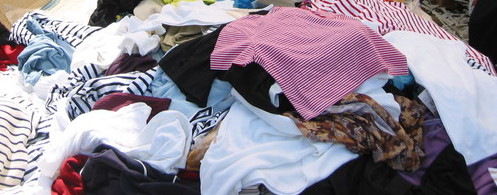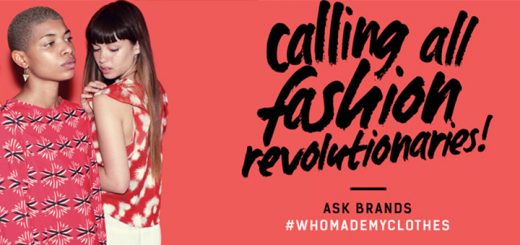
Creating an Ethical Minimalist Wardrobe
I’m not going to pretend I’m some kind of fashion guru, because I’m really not. Up until about the age of 18 I hated shopping, and then suddenly I started making up for lost time. My wardrobe is pretty much always full to bursting!
It wasn’t until I started working at Ethical Superstore three years ago that I began to delve into the world of Ethical Fashion. I’d rarely thought about where my clothes come, and although I already gave certain high street stores a wide berth, I’d never thought about how fashion can be ethical. So I’m going to look at some tips for creating an ethical, minimalist wardrobe. After reading more and watching documentaries about the fashion industry, I’ve decided it’s time to make a change.
What are the Benefits?
Keeping your wardrobe simple makes it so much easier to get ready every morning. When you have less to work with, you already know in your mind what look is going to suit you and what will feel comfortable for the day. Removing such a difficult decision in the morning will give your brain a little break so early, and is bound to make you feel better throughout the day.
When you’re wearing a simple outfit you can do so much more with accessories. Stand out with a bright vegan bag or fair trade statement jewellery. Just because you have fewer clothes to choose from, that doesn’t mean you always have to look the same (unless you want to of course!).
Have a Sort Out

I know I’m not alone in having a wardrobe full of clothes I don’t wear. There are only so many sort outs you can do before you realise you’re just shuffling items of clothing around to make your wardrobe and drawers less cluttered. The best thing to do is have one big sort out. Start by getting rid of the clothes that don’t fit your anymore, then move on to those that you haven’t worn in the past 6 or 12 months.
Of course don’t just throw the clothes away. The materials our clothes are made of are not readily biodegradable and will end up in landfill for anywhere from 3 months to 80 years. Selling or donating your unworn clothes is the best option, especially donating to refuges for women or immigrants, or homeless shelters. For anything that is just a bit too worn for donating, try recycling! There are plenty of tutorials for making a bag or a cushion cover out of an old t-shirt. Or you can cut up really old items of clothing to use as dusters and cleaning cloths. The possibilities for re-using old clothes are endless!

Buy Basics
When creating your ethical minimalist wardrobe, start with the basics. T-shirts, shirts, jeans, leggings – the things you are probably going to wear more than others. Keep colours quite neutral with maybe a few bright pieces that will look great in summer. Neutral colours work better because they look great together and don’t clash, giving you a lot more options for outfits.
Look for the Ethical Credentials
Research before you buy. Find out who made the clothes, where they were made and what they are made from. Fast fashion is extremely damaging to both our planet and the people on it. Look for fairly traded and ethically made clothing, especially if it’s certified so you know nobody has been exploited during the production of the clothes. This includes the exploitation of labour for minuscule pay, or working with hazardous chemicals during the dying process etc.
Also look for clothing made out of sustainable and organic materials. Non-organic cotton uses about 25% of the worlds insecticides to grow. Not only does this damage the local wildlife, as well as marine life from runoff, it can also leave chemical residues in the clothing it is made into.
Bamboo is an extremely sustainable material as it is one of the fastest growing plants in the world. Along with hemp, organic cotton and tencel among others, there’s a whole range of sustainable materials we can be using for our clothes instead of regular grown cotton and man-made fabrics. And indeed brands like Thought, Nomads, Komodo, Patagonia and People Tree already are.
Buy to Last
While we always encourage you to go out and buy ethical clothing where you can, sometimes that might just not be possible. The next best thing is buying clothes that last. If you’re buying cheap clothes, they’re probably cheaply made, and they’re not going to stand the test of time. Buy clothing pieces from reputable brands that you know are going to last a good few years, rather than three months at a push. Once these clothes no longer fit or are no longer to your taste, you can simply pass them on to a friend or family member, recycled them, or donate!
Do let us know your thoughts on creating an ethical wardrobe below, and share pictures of your minimalist wardrobe with us on Instagram, Facebook or Twitter! How do you tackle the pressures of fast fashion?



